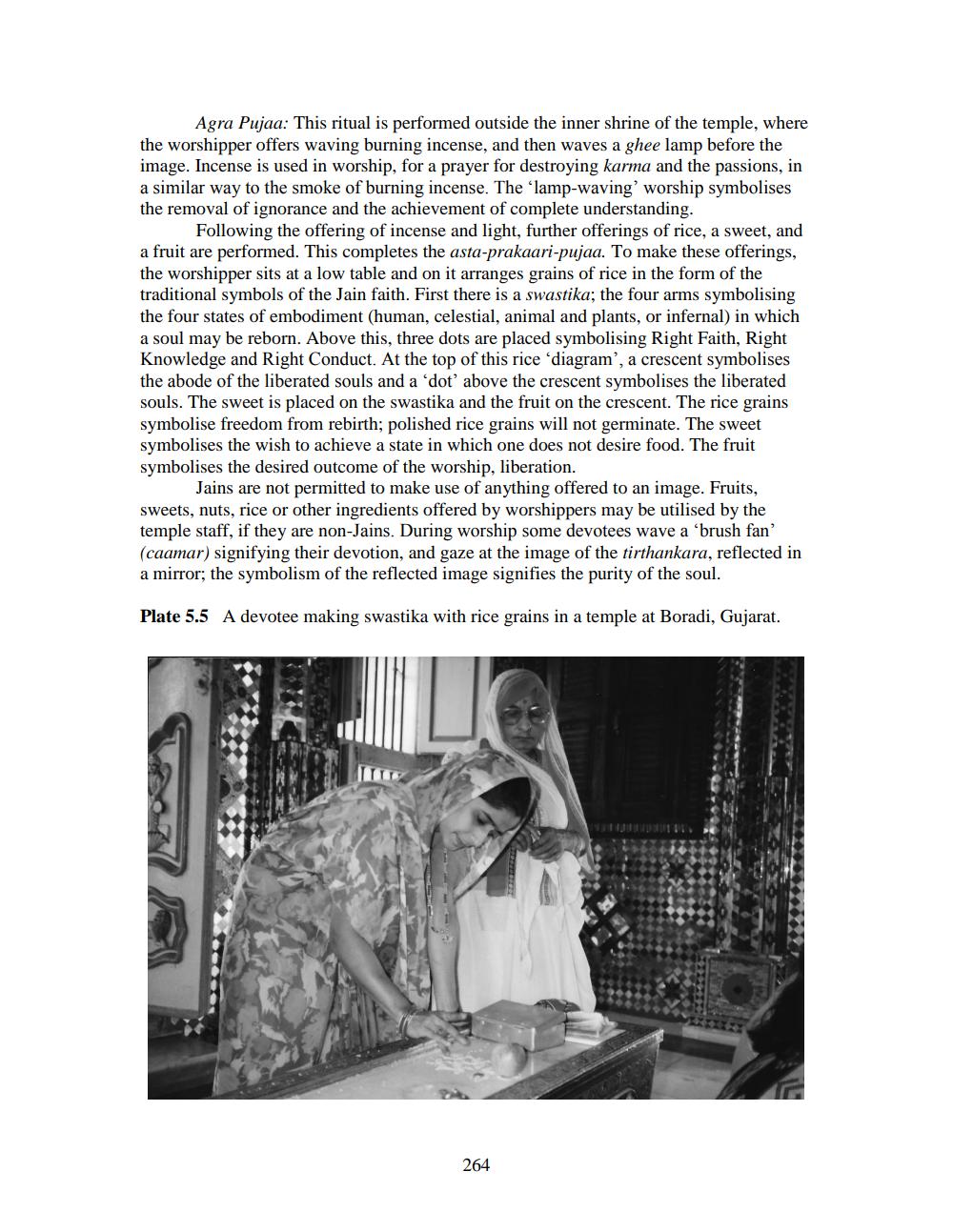________________
Agra Pujaa: This ritual is performed outside the inner shrine of the temple, where the worshipper offers waving burning incense, and then waves a ghee lamp before the image. Incense is used in worship, for a prayer for destroying karma and the passions, in a similar way to the smoke of burning incense. The 'lamp-waving' worship symbolises the removal of ignorance and the achievement of complete understanding.
Following the offering of incense and light, further offerings of rice, a sweet, and a fruit are performed. This completes the asta-prakaari-pujaa. To make these offerings, the worshipper sits at a low table and on it arranges grains of rice in the form of the traditional symbols of the Jain faith. First there is a swastika; the four arms symbolising the four states of embodiment (human, celestial, animal and plants, or infernal) in which a soul may be reborn. Above this, three dots are placed symbolising Right Faith, Right Knowledge and Right Conduct. At the top of this rice 'diagram', a crescent symbolises the abode of the liberated souls and a 'dot' above the crescent symbolises the liberated souls. The sweet is placed on the swastika and the fruit on the crescent. The rice grains symbolise freedom from rebirth; polished rice grains will not germinate. The sweet symbolises the wish to achieve a state in which one does not desire food. The fruit symbolises the desired outcome of the worship, liberation.
Jains are not permitted to make use of anything offered to an image. Fruits, sweets, nuts, rice or other ingredients offered by worshippers may be utilised by the temple staff, if they are non-Jains. During worship some devotees wave a 'brush fan' (caamar) signifying their devotion, and gaze at the image of the tirthankara, reflected in a mirror; the symbolism of the reflected image signifies the purity of the soul.
Plate 5.5 A devotee making swastika with rice grains in a temple at Boradi, Gujarat.
264




